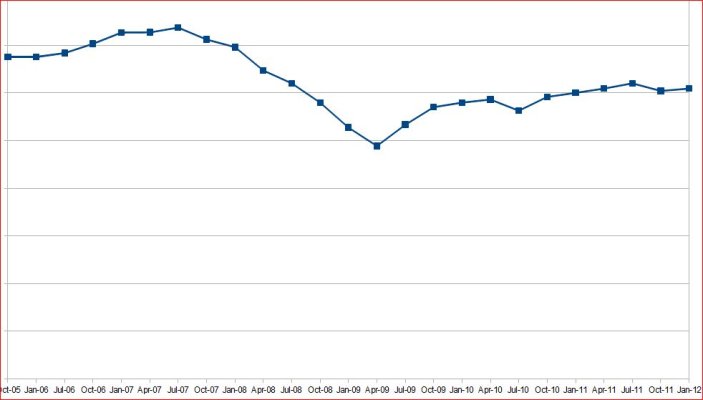Koolau
Give me a museum and I'll fill it. (Picasso) Give me a forum ...
Very interesting thread so far and thanks to everyone for sharing.
Here are some stats for us:
That last column is the inflation adjusted portfolio balance. I figure that is really the figure of merit for us. So we are down 11% from the start of retirement.Code:year spend portfolio 2004 6.4% 15% 2005 3.7% 16% 2006 4.5% 14% 2007 5.2% 20% 2008 4.7% -10% 2009 6.6% -2% 2010 5.6% 0% 2011 4.8% -11%
Besides my lack of great stock/bond returns, my excuses are:
1) Delaying SS until 2 years from now. DW started hers in 2010.
2) Helping DS get through college
3) Converted a lot of IRA money to Roth triggering heavier tax bite.
This year DS graduates from college and we will be taking some income from Roth's to reduce taxes a lot. When I take SS our spending could go down into the 3% range but I figure we will want to live it up a bit. Don't really want to be on one of those FIRECalc lines that go up and to the left. Flat might be better in terms of quality of life before we turn off the lights for good.
I've been independently thinking lately about your reason (3) Converted a lot of IRA money to Roth triggering heavier tax bite.) I'm coming to think of the taxes paid to convert as a "neutral" at worst. IOW, a case could be made NOT to include the tax bite of a Roth conversion in your WR. You are simply exchanging one asset (a tax-deferred one) for a tax "free" one. The cost to do so is the tax bite - but that "cost" is virtually converted to "value" within the Roth. So it could be looked at as "neutral". I'm certain it doesn't feel that way when you look at your cash stash or even your "unadjusted-for-future-taxes" net worth. In this case, I guess it's all about your viewpoint. YMMV.


